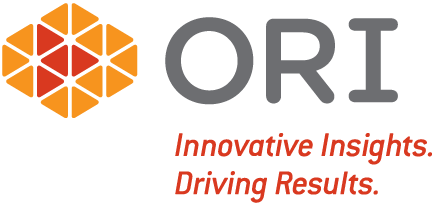3 Quick Remedies for Your Data Management Symptoms
Data management can be tricky, no matter how you slice it. Managing data well requires ample focus on the part of the organization, but time is short and resources are often limited. Organizations encounter numerous issues when it comes to data but often overlook the underlying symptoms behind those challenges. Before they evolve into true obstacles to growth, be on the lookout for these three common warning signs that your data could be handled more effectively. With surprisingly straightforward solutions, data management will be far easier to handle.
Symptom #1: Lack of Clarity Around the Business Goal
One of the biggest issues for data collection and data management is connecting those data requirements to the strategic business goals they will support. Gathering and assembling the right data to reveal the right insights is the end goal, so issues arise when goals are vague or difficult to measure. Halfway through a project, teams may end up reassessing the deliverables and goals because they were not laid out clearly, at which point the data requirements become almost impossible due to lack of focus.
The Remedy: Set Specific, Realistic Goals
Before you even start gathering data, you need to come up with a sensible plan that has achievable “stretch” goals. These goals need to be specific and measurable, such as “increase membership in the 20-35 age range by 10% by next year” or “add three new sponsors by December.” With specificity comes clarity on what data you truly need to hit demanding but high-return objectives.
Symptom #2: Difficulty Accessing Data
Once the proper data has been gathered, accessing it can be a different story. Data can be stored in separate places, creating “siloes” with barriers to entry for employees that need to use (or should be using) that data the most. Your organization may have a dedicated data analyst, but if everyone must go through them to get the data they need, that person can become an unintentional bottleneck in the entire process.
Alternatively, technological barriers to access can exist, making it just plain hard to extract the data from your underlying customer management or association management system. Just because you have all the data you need does not mean it’s easy to get your hands on crucial insights in a timely manner.
The Remedy: Make the Business Case for Why Accessible Data Is a “Must Have”— Not a “Nice to Have”
To combat difficulties with accessing the right data at the right time—something that organizations must do in order to remain competitive—teams must be empowered to get what they need precisely when they need it. If teams are forced to go through a single channel to get the information they need, then the organization is not data-driven. Start with the data you can access and mine it for information that can help grow revenues—whether small or large. This is a “walk before you run” approach. As you demonstrate the power of data-driven decision making, it is much easier to advocate for additional analytical resources. Ultimately, a virtuous cycle of better data, better decisions will ensure data accessibility challenges become a distant unpleasant memory.
at the right time—something that organizations must do in order to remain competitive—teams must be empowered to get what they need precisely when they need it. If teams are forced to go through a single channel to get the information they need, then the organization is not data-driven. Start with the data you can access and mine it for information that can help grow revenues—whether small or large. This is a “walk before you run” approach. As you demonstrate the power of data-driven decision making, it is much easier to advocate for additional analytical resources. Ultimately, a virtuous cycle of better data, better decisions will ensure data accessibility challenges become a distant unpleasant memory.
Symptom #3: Poor Data Quality
Gathering and assembling data as cleanly and as quickly as possible can be challenging. Duplicate data, conflicting data, or not getting the necessary amount of data can all add up to a time-consuming mess.
The Remedy: Make Data a Focal Point of Every Business Decision
Over time, the more an organization relies on the timeliness and accuracy of data, the cleaner the data will ultimately become as leaders depend on it to make important decisions. There are plenty of programs and algorithms that can “scrub” data to remove duplicates and flag conflicting elements. However, the goal is to increase the quality of the data in the first place so you are not attempting alchemy—after all, you can’t turn lead into gold. In order to get this spotlight shining brightly on the importance of data integrity, identify six to eight critical fields that are key to short-term membership and marketing objectives, and then incorporate data quality into regular leadership discussions. Reviewing improvements in data collection protocols, progress in filling important data gaps, and overall data cleansing efforts may not be the most exciting discussion, but a little senior-level attention goes a long way toward achieving data-informed decision making.
By embracing data as a strategic asset and leveraging its power, your organization can tap into its full benefits while also warding off time-consuming data management headaches. It’s not a process that happens overnight, but steady improvements in high-quality data that is accessible and linked directly to key objectives will pay off quickly.












